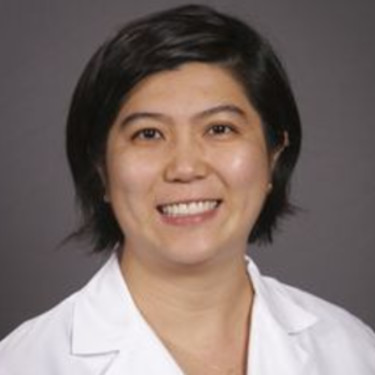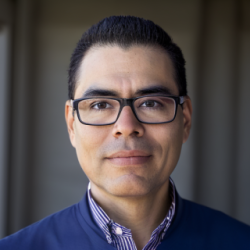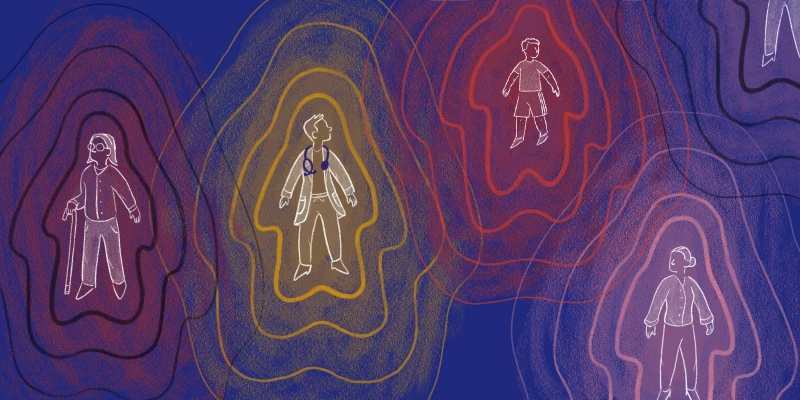As a queer, Chinese, female colorectal surgeon, I wear my pride in the form of a rainbow caduceus symbol on my white coat lapel. But how crucial my background was didn’t become real until my personal experience and knowledge of LGBTQ+ culture helped a transgender patient.
Sam* (they/them) had seen me in the office for a few months for a persistent anorectal issue. The morning Sam arrived to complete paperwork before surgery for the issue, I made a note on the chart that they used “they/them” pronouns. Our medical records still default to male/female and he/she, with no option for anything else. Sam appreciated this small gesture of inclusivity and acceptance.
A while later, I was paged overhead, and the nurses told me Sam had refused a urine pregnancy test. A urine pregnancy test is standard presurgical procedure, generally so that there is no unintentional harm to an unknown fetus by anesthesia medications or radiation. However, I understood immediately what this was about. Because we had a longitudinal patient-physician relationship, Sam had been comfortable enough to share with me that they were assigned female sex at birth and presented as transmasc or lesbian and had a female partner. Sam didn’t engage in sexual intercourse that would result in pregnancy.
I told the nurses this, but they said they had to do a urine pregnancy test or else cancel the surgery. I told them I would discuss this with the patient and if they refused a urine pregnancy test and accepted the potential risks to a hypothetical fetus, I would document that, and we would proceed with surgery. Sam said there was no chance they could be pregnant and expressed frustration that they weren’t being “trusted” about that. I explained that it wasn’t necessarily about trust but medico-legal implications and that the hospital always has to CYA. I said that if they refused the test and accepted the risks associated with that, then I would write that in the chart, and we would proceed. That was exactly what we did.
Because of this interaction, Sam trusted me with their medical issues, which was how we ended up discussing chest pain in a colorectal surgeon’s office. Toward one of their last visits for the anorectal issue, I mentioned that they wouldn’t have to see me anymore and asked if there was anything else I could do for them. They paused and said, “Well, this chest pain is still bothering me.”
“Chest pain?” I asked. Chest pain was a little outside of my purview. My practice is broad-based colorectal surgery but otherwise limited in scope.
“Yeah,” Sam replied. They told me that this had been going on for years. They’d gone to their PCP multiple times and had been prescribed NSAIDs. They’d seen a cardiologist who ruled out a cardiac problem. They went to a pulmonologist and had X-rays done. They were left with the diagnosis of costochondritis, an inflammation of the joints of the rib cage. But the pain medication wasn’t helping, and they said it sometimes hurt to breathe or to bend over.
I said, “Can you show me where it hurts?”
They pointed at a spot right in the middle of their chest, below the sternum. My assistant was in the room, so I said, “Can I see it? I want to make sure there isn’t anything visible.”
Sam looked down at their chest and slowly lifted their T-shirt. I noticed some bandages around their chest. I visually inspected the spot that Sam pointed to, on top of the xiphoid process. There was no bruising, noticeable lumps or masses, or skin changes.
“Can I press on it?” I asked. Sam nodded.
I placed three fingers on the area, and Sam immediately jerked away. “Ouch!” I pulled back and waited. “Sorry, it’s sensitive,” they said.
“Can I try again?” I palpated once more with a little distraction but noticed they still winced, right over the xiphoid but not over the rest of the rib cage. Done torturing them, I said, “Sorry, I just had to be sure.” A thought was brewing. “How long have you been binding your chest?”
“Off and on since college,” they said.
“Did the pain start after you started binding?”
Sam thought about it for a minute. “Yes, I think so.”
Somewhere in the back of my mind, I knew that binding long term could cause skeletal deformities or injuries. Often, people did not want to talk about it, ashamed that they had to do this to feel like a truer version of themselves. So I wondered if Sam had brought up the binding to any clinicians.
“No…” they said.
I didn’t want to poke further, at this point, literally or figuratively, so I said, “As you know, this is the opposite end of what I deal with. But you’ve had a bunch of chest X-rays that don’t show anything, and you’re still having pain, so I’d like to start with a chest CT, maybe even an MRI. I’m looking for some kind of injury to the bones or joints. I’ll also send you to my friend, who is a thoracic surgeon and might be able to help.
Sam was ever cautious and very good about asking about the need for tests and their potential effect on further outcomes/intervention. But at this point, their exasperation at the lack of a diagnosis or pain relief was apparent, and they agreed to my plan.
A few weeks later, a CT scan report popped up on my computer. Sam had a minor fracture of the xiphoid process, right where their pain was. After seeing a pain specialist for injections, the pain was relieved by blocking the nerves to the xiphoid area. Then, Sam underwent surgery to have the xiphoid removed.
When I discussed this article with Sam, months after their xiphoid surgery, they expressed that subspecialties should also have continuous training around LGBTQ+ care. Perhaps if one of the cardiologists or pulmonologists had noticed the chest binding and the implications of it, they would have made the diagnosis sooner, and Sam would not have been in pain for years.
Medical schools and training programs have the best intentions. Most have adopted some curricula surrounding the care of the LGBTQ+ population, usually a one-time session on LGBTQ+ cultural competency. However, this curricula has evolved into just another box that the institution can check off — what happens when students and trainees start their practices is an entirely different story. LGB patients are 2.17 times more likely to delay obtaining health care, while transgender patients are 2.76 times more likely to report unfair treatment and poor quality of care. Some physicians may never have to consider special care or diagnoses for the LGBTQ+ population. Most who do are in primary care, transgender care, or endocrinology.
LGBTQ+ folks tend to have less access to care, less cancer screening, and are more likely to be uninsured. There are three components to addressing these disparities:
1) Improving the cultural competency education in medical school and postgraduate training, which a few sites are laudably doing.
2) Increasing the diversity of our physician population, because representation matters.
3) Continuing cultural competency training for physicians in all specialties, even when they are in practice. Because our world is constantly evolving, LGBTQ+ people are more visible, and we are more aware of the need for culturally competent care.
Dr. Carmen Fong is a colorectal surgeon who recently moved from New York City to Atlanta, Georgia, with her wife and two cats. When she is not writing, she enjoys cooking, drawing cartoons, and reading about the mysteries of the universe. She can be found on Instagram @drcarmenfong and on Twitter @Carmen_FongMD. Dr. Fong is a 2022–2023 Doximity Op-Med Fellow.
*Written consent was obtained from the patient to tell this story. Names and details have been changed to protect their privacy.
Illustration by April Brust







